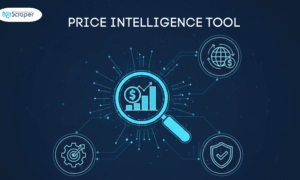Cloud computing is revolutionizing the way manufacturers operate. Especially in the United States, where manufacturing plays a significant role in the economy, integrating cloud computing into manufacturing operations is no longer a luxury—it has become a strategic imperative.
Understanding the Shift: Why Cloud Computing is Essential for Modern Manufacturing Operations
Manufacturing has always relied on efficiency, scalability, and precision. With increasing global competition and customer demand for customization, traditional manufacturing systems often fall short. Here is where cloud computing enters the equation.
Cloud computing offers scalable infrastructure, real-time data access, and powerful analytics that empower manufacturers to make faster, more informed decisions. Moreover, it reduces the dependency on costly on-premise servers and hardware. This paradigm shift opens doors for small to mid-sized manufacturers across the U.S. to compete with global giants.
Key Benefits of Integrating Cloud Computing in Manufacturing
To fully appreciate the power of cloud computing in manufacturing, let’s delve into some specific benefits it brings to the table:
Enhanced Collaboration Across Teams and Geographies
One of the most significant advantages of cloud integration is its ability to foster seamless collaboration. Engineers, designers, and production managers can access shared files and data in real-time, regardless of their location. This eliminates silos and promotes teamwork, which in turn accelerates innovation and speeds up time-to-market.
Furthermore, remote work and hybrid models have become standard in the post-pandemic era. With cloud-based systems, team members can interact, contribute, and oversee operations from anywhere, thereby maintaining workflow continuity and increasing efficiency.
Real-Time Data Analytics and Improved Decision-Making
Cloud computing platforms offer robust data analytics tools that collect and analyze data in real-time. As a result, manufacturers can monitor production lines, track performance metrics, and identify bottlenecks instantly.
For example, predictive analytics can forecast equipment failures before they occur, reducing downtime and maintenance costs. This not only boosts productivity but also minimizes waste and optimizes resource utilization.
Cost Efficiency and Operational Scalability
Another compelling reason to adopt cloud computing is cost reduction. Cloud services operate on a subscription or pay-as-you-go model. Thus, manufacturers can scale resources up or down based on demand without incurring massive capital expenditures.
In contrast to traditional IT setups, cloud platforms require less physical infrastructure, which significantly cuts down energy consumption, maintenance costs, and space usage. As manufacturing demands fluctuate, especially in seasonal industries, cloud computing ensures adaptability without financial strain.
Improved Supply Chain Visibility and Management
An efficient supply chain is crucial for manufacturing success. Cloud computing enhances supply chain management by integrating data from various sources into a centralized system. This allows manufacturers to track shipments, inventory levels, and vendor performance with ease.
Additionally, automation tools can be utilized to generate alerts for delays or shortages, helping managers make quick decisions to maintain production schedules. In doing so, companies can improve delivery timelines and enhance customer satisfaction.
Enhanced Security and Regulatory Compliance
Understandably, many manufacturers express concern over the security of their data. However, reputable cloud providers invest heavily in advanced cybersecurity measures. These include multi-factor authentication, encryption, and regular system audits.
In the U.S., where manufacturers must comply with regulations like ITAR (International Traffic in Arms Regulations) and NIST (National Institute of Standards and Technology) frameworks, cloud providers offer compliance-ready solutions. As a result, manufacturers can safeguard sensitive information and maintain regulatory adherence.
Challenges to Cloud Adoption in U.S. Manufacturing—and How to Overcome Them
While the advantages are clear, integrating cloud computing into manufacturing operations does come with its challenges. Fortunately, most can be mitigated with proper planning and execution.
Legacy System Integration
Many manufacturers still rely on outdated legacy systems that are not cloud-compatible. Transitioning to the cloud may require significant system upgrades or replacements, which can seem daunting.
However, adopting a hybrid cloud model allows companies to maintain some existing infrastructure while slowly migrating processes to the cloud. This phased approach reduces risk and enables smoother integration.
Skills Gap and Training Needs
Cloud computing requires specific skill sets that may be lacking in traditional manufacturing environments. Investing in employee training and upskilling is essential.
In the United States, numerous educational institutions and online platforms offer cloud certification programs tailored to industrial settings. Encouraging internal learning and hiring skilled professionals can ease this transition effectively.
Concerns Over Data Privacy and Sovereignty
For U.S.-based manufacturers, especially those involved in defense or sensitive sectors, data sovereignty is a top concern. Choosing a cloud provider that operates data centers within U.S. borders ensures that data remains compliant with national regulations.
Additionally, selecting providers with strong service-level agreements (SLAs) and transparent privacy policies can provide manufacturers peace of mind.
Best Practices for a Successful Cloud Integration Strategy
For manufacturers looking to harness the power of the cloud, implementing a structured strategy is key. Below are some best practices to follow:
Conduct a Thorough Needs Assessment
Before initiating cloud adoption, assess which operations would benefit most. Whether it’s supply chain management, inventory tracking, or production monitoring, targeting high-impact areas first ensures quick wins and measurable ROI.
Choose the Right Cloud Model and Provider
Manufacturers can opt for public, private, or hybrid cloud models. Public clouds are cost-effective and scalable, while private clouds offer enhanced control and security. Hybrid models blend both advantages and are ideal for phased transitions.
When selecting a cloud provider, evaluate their industry experience, compliance capabilities, support services, and uptime guarantees.
Focus on Integration and Interoperability
Ensure that cloud systems can integrate with existing software tools such as ERP (Enterprise Resource Planning), MES (Manufacturing Execution Systems), and CRM (Customer Relationship Management). Seamless interoperability improves workflow and reduces data silos.
Establish a Strong Cybersecurity Framework
Cybersecurity should be a top priority. Collaborate with your cloud provider to establish robust security protocols. Conduct regular audits, use encrypted data channels, and educate employees on best practices.
Continuously Monitor and Optimize
Cloud computing is not a set-it-and-forget-it solution. Regularly evaluate system performance, monitor usage trends, and optimize resources to ensure cost-effectiveness and efficiency.
The Prospect e of U.S. Manufacturing is Cloud-Powered
As competition intensifies and digital transformation accelerates, cloud computing will continue to play a pivotal role in the evolution of manufacturing. Its capacity to foster innovation, improve agility, and drive operational excellence is unmatched.
U.S. manufacturers that embrace this technology today will be better positioned to adapt to market changes, respond to customer needs, and achieve long-term growth. The integration of cloud computing isn’t just a tech upgrade—it’s a foundational shift that will define the next generation of manufacturing.
Conclusion
Integrating cloud computing in manufacturing operations represents a monumental step forward for U.S. manufacturers. From enhanced efficiency and cost savings to improved agility and security, the benefits are transformative. While challenges exist, a well-planned strategy coupled with the right partners can ensure a successful transition. As the global manufacturing landscape continues to evolve, cloud-powered operations will serve as the bedrock for innovation, resilience, and growth.



































